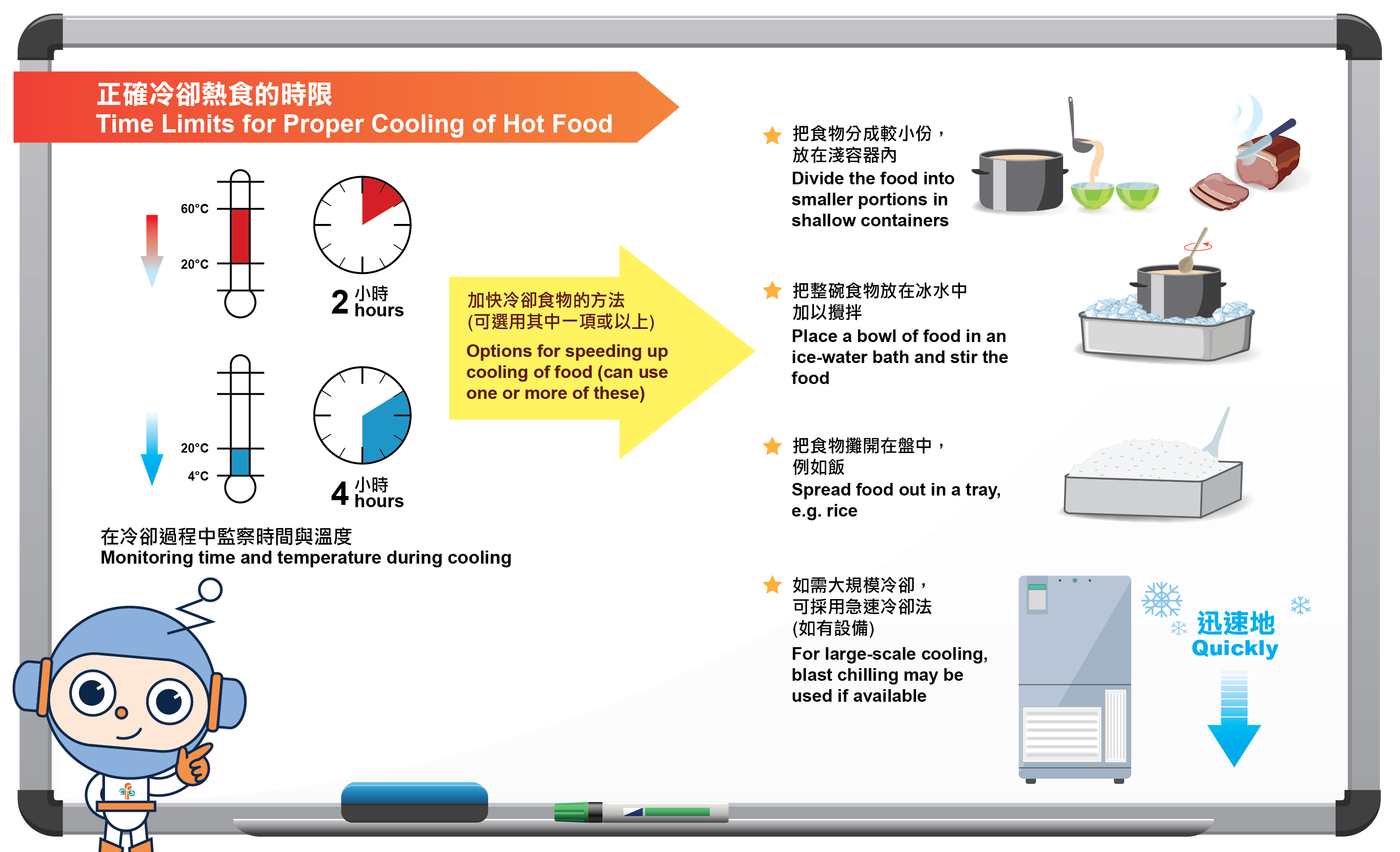
Food Safety Focus (193rd Issue, August 2022) – Article 1
Heat-stable Toxins from Bacillus cereus and Staphylococcus aureus:
Why Cooked Food Should Not Be Left at Room Temperature for Too Long
Reported by Dr. Ken CHONG, Scientific Officer,
Risk Assessment Section, Centre for Food Safety
Recently, fried rice samples from a local restaurant were found to contain excessive amounts of Bacillus cereus (B. cereus). While cooking and reheating generally makes foods safe, subsequent improper handling of cooked food may create opportunities for bacteria like B. cereus and Staphylococcus aureus (S. aureus) to form heat-stable toxins, causing food poisoning. Now let us look at how cooked food allows bacteria to thrive and how we can avoid this from happening.
Improper Handling after Cooking Can Put Food at Risk
B. cereus and S. aureus are widespread in our surroundings and are normally present at low amounts in food, which does not always result in food poisoning. These bacteria have to grow to high levels to produce sufficient toxins in foods to make people sick. Mishandling of food after cooking will create such an opportunity, such as prolonged storage under ambient temperatures.
While cooking is effective to kill S. aureus and vegetative cells of B. cereus, B. cereus can exist as spores which are resistant to normal cooking temperature the latter's spores are resistant to heat and can only be eliminated by high-temperature treatment, say 121°C for 3 minutes. Paradoxically, the heat from cooking not only makes the spores grow into vegetative cells, but also creates an environment conducive to cell growth by killing off other competing microorganisms. Similarly, S. aureus, if contaminating food after cooking, can thrive well in the cooked food in the absence of other microbes. Toxins will be formed during multiplication of these bacteria, which cannot be eliminated by reheating. Hence, food should be handled properly after cooking to reduce the risk of toxin production by these bacteria.
Avoid Cross-contamination and Dangerous Temperatures
Minimising contamination by these bacteria is crucial in the first place. Clean food preparation areas prevent contamination from the environment, including spores of B. cereus. When preparing food, food handlers should ensure good hygiene practices, such as frequent hand washing and cleaning food contact surfaces as they go. S. aureus is commonly present inhuman nasal passage, throat, hair and skin. Masks and hairnets can be used while handling prepared food to prevent S. aureus contamination from other body parts, while waterproof adhesive dressings should be applied for covering hand wounds.
Limiting bacterial growth after cooking is also important for avoiding toxin-forming microorganisms, particularly when B. cereus spores in food cannot be efficiently eliminated. Freshly prepared food should be eaten as quickly as possible; otherwise, it should be held at temperatures over 60°C for hot holding, such as fried rice prepared ahead of time for sale during lunch hours. Freshly produced food may also be cooled down before serving cold, such as soybean milk, or for additional processing, such as making steamed rice less wet for fried rice. In these instances, cool food from 60°C to 20°C in two hours or less, and then from 20°C to 4°C in four hours or less in a fridge (See Figure 1). These time limits help prevent prolonged exposure to ambient temperature and, therefore, dangerous bacteria growth.

Figure 1: Safe cooling of freshly produced food after cooking
If chilled food is served hot later, it should be reheated thorougly until the temperature at its centre reaches at least 75°C. However, it should not be reheated for more than once to avoid multiple exposures to dangerous temperatures.
Key Points to Note
- Cooking and reheating usually can render food safe by killing bacteria, but subsequent improper handling and storage may also create an opportunity for B. cereus and S. aureus to form heat-stable toxins.
- The Heat of cooking can induce the spores of B. cereus to germinate and become vegetative cells and creates a favourable environment for the cells as well as contaminating S. aureus to grow in the absence of other microbes
- Cooked food that are not consumed immediately should be hold at temperatures over 60°C or cooled rapidly to prevent the growth of contaminating bacteria.
Advice to the Trade
- Carefully estimate how much food is required to avoid overproduction leading to running out of room for proper hot-holding, cooling and refrigeration.
- Plan the production schedule ahead to avoid preparing food too far in advance.
Advice to the Public
- Consume cooked foods as soon as possible. If food served cold is not consumed immediately, keep it in the fridge at 4°C or below.
- Reheat chilled food thoroughly and do not reheat food more than once.

